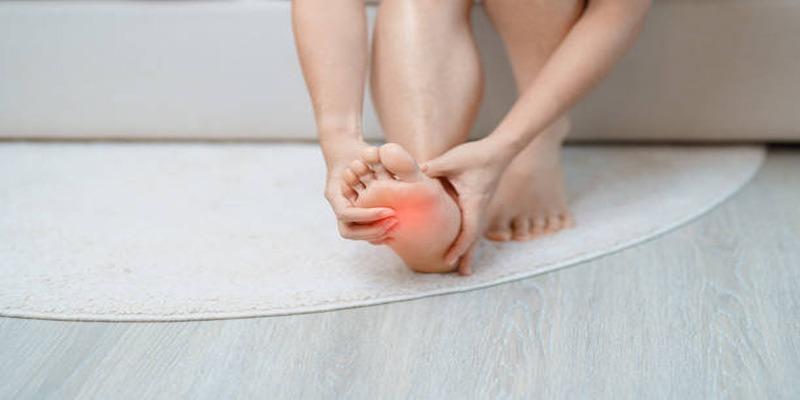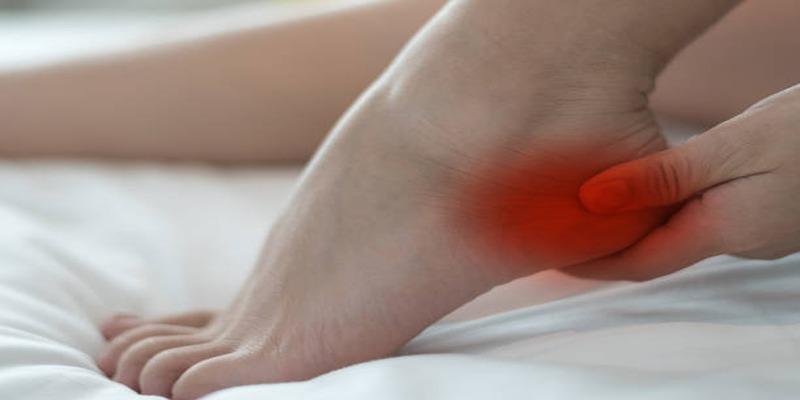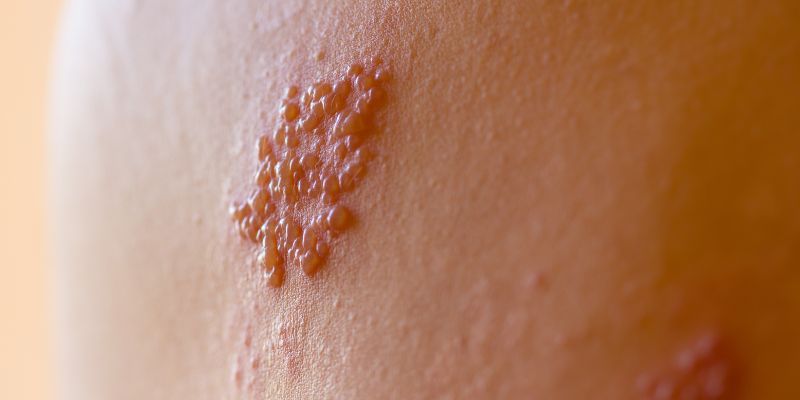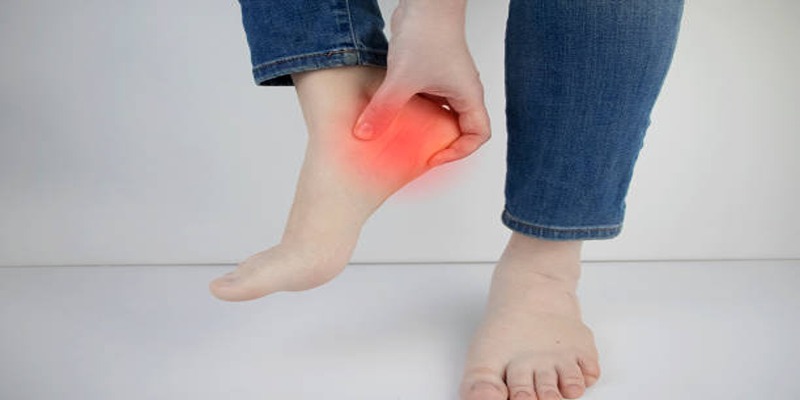Heel spurs are a common foot condition that can cause discomfort and hinder daily activities. These bony growths form on the underside of the heel and are often associated with persistent pain. In this guide, we will explore the common signs and symptoms of heel spurs, helping you identify and manage this condition effectively.
Signs and Symptoms
Heel spurs can present with a variety of symptoms, ranging from sharp pain to swelling and tenderness. Below, we explore these signs in detail to help you better understand how heel spurs may manifest and affect your daily life.
1.Sharp Pain in the Heel
A sharp, stabbing pain in the heel is often one of the first signs of a heel spur. This pain is typically most intense in the morning during the first few steps after getting out of bed. Overnight, the soft tissues in the foot tighten, and the sudden strain when walking can cause sharp discomfort.
This pain can also occur after sitting or inactivity, as movement strains the tissues around the heel spur. Activities like running, jumping, or standing for long periods can make the pain worse, often feeling like walking on a thumbtack or sharp object, making daily tasks difficult without proper treatment.
2.Dull Ache in the Heel
In addition to sharp pain, some may experience a dull ache in the heel that lasts throughout the day. Though less intense, this ache is persistent and can interfere with daily activities. It’s typically caused by ongoing inflammation in the surrounding tissues, which worsens with physical activity or prolonged standing.
Over time, the stress from walking, climbing stairs, or exercise can make this symptom more challenging to manage. If left untreated, the ache can lead to fatigue or reduced mobility, impacting overall quality of life.
3.Tenderness at the Bottom of the Heel
Heel spurs often cause tenderness at the bottom of the heel, particularly near the bony growth. This tenderness is more noticeable when pressed and may feel like a bruise or deep soreness. It reflects the inflammation in the surrounding tissues and can be made worse by wearing unsupportive shoes, like flat sandals or high heels. Over time, inadequate cushioning increases heel strain, making tenderness harder to relieve. Proper footwear with cushioning and arch support is essential for reducing this discomfort.
4.Swelling and Inflammation Near the Heel
Swelling and redness around the heel are common signs of a heel spur. The affected area may feel warm, appear swollen, and become tender due to the body’s inflammatory response. This swelling can put extra pressure on nearby tissues, worsening the pain and making it harder to wear certain shoes.
The stiffness or discomfort often feels worse after periods of rest or inactivity. Anti-inflammatory treatments like ice packs, over-the-counter medications, or physical therapy can help reduce swelling and ease pressure on the heel.
5.Warmth in the Affected Area
A warm sensation in the heel is another common symptom of heel spurs. It happens due to increased blood flow as the body works to heal irritated tissues. This warmth is often paired with swelling and redness and may feel more noticeable after physical activity or long periods of standing. For some, it can feel like a mild burning sensation, adding to the discomfort. Resting the foot, elevating it, and using ice packs can help reduce this symptom over time.
6.Small Bony Protrusion
In advanced heel spur cases, a small bony bump may form at the bottom of the heel. While not always visible, it can sometimes be felt as a hard spot when pressing on the heel. This growth results from calcium deposits caused by repeated stress on the heel. Though it’s not always painful, it can make the area more sensitive and wearing tight or rigid shoes uncomfortable.
Walking barefoot or on hard surfaces might also worsen the discomfort. Custom orthotics or padded insoles can help relieve pressure and reduce pain.
7.Pain After Prolonged Standing or Exercise
Prolonged physical activity, such as standing, walking, or exercising for an extended period, is a common trigger for heel spur pain. The repetitive pressure and strain on the heel during these activities can lead to increased inflammation and discomfort, making it difficult to stay active for long periods. For many individuals, this pain often starts as a mild ache and gradually intensifies the longer they remain on their feet.
High-impact activities like running or jumping can also exacerbate the symptoms, especially if proper footwear is not worn. Over time, this pain can interfere with daily routines, work responsibilities, or fitness goals, as the heel becomes increasingly sensitive to stress.
8.Difficulty Walking Barefoot

For many with heel spurs, walking barefoot—especially on hard or uneven surfaces—can be very uncomfortable. Without the cushioning of shoes, pressure on the heel increases, leading to pain and sensitivity. Even short distances barefoot can feel unbearable due to the direct impact on the heel. Supportive footwear with custom orthotics, cushioned insoles, or shock-absorbing soles can help reduce pain and discomfort. For those who prefer going barefoot at home, walking on soft, padded surfaces can also provide relief.
Prevention Strategies
Adopting prevention strategies can significantly reduce the risk of heel pain and maintain foot health. Consistent care, mindful habits, and using appropriate footwear are key to avoiding discomfort.
- Choose shoes with good arch support and cushioning to prevent foot pain or injury. Make sure they fit well and suit your activities.
- Avoid standing too long on hard surfaces without padding, as it can cause discomfort and fatigue. Use anti-fatigue mats or insoles for extra support.
- Stretch and strengthen foot muscles regularly to boost flexibility and resilience. Simple exercises like toe stretches, ankle rolls, and resistance band workouts can help.
- Maintain a healthy weight to reduce pressure on your feet and prevent issues like plantar fasciitis or joint pain. A balanced diet and regular exercise support both foot and overall health.
When to Seek Medical Advice
Foot pain is a common complaint, but it's important to know when to seek medical advice. If you experience severe or persistent foot pain, swelling, redness, or numbness, it's best to consult a healthcare professional. These could be signs of an underlying condition that requires medical treatment. Additionally, if your foot pain is affecting your daily activities and quality of life, it's important to seek help from a doctor or podiatrist.
Conclusion
Proper foot health is essential for maintaining overall well-being and mobility. Paying attention to symptoms, practicing good foot care, and seeking medical advice when needed can help prevent complications and ensure a more active and pain-free lifestyle. Remember, your feet carry you through life—taking care of them is an investment in your health and happiness.










